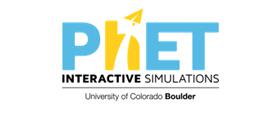- View more resources from this publisher
 PhET Interactive Simulations University of Colorado Boulder
PhET Interactive Simulations University of Colorado Boulder
Beer's Law Lab
This simulation explores the Beer's Lambert Law. It allows you to make colourful concentrated and dilute solutions and explore how much light they absorb and transmit using a virtual spectrophotometer.
Curriculum links include:
• Beer's law
• Solutions
• Concentration
• Molarity
• Light
• Absorbance
• Transmittance
• Spectrophotometry
Sample learning objectives include:
*Describe the relationships between volume and amount of solute to solution concentration.
*Explain qualitatively the relationship between solution colour and concentration.
*Predict and explain how solution concentration will change for adding or removing: water, solute, and/or solution.
*Calculate the concentration of solutions in units of molarity (mol/L).
*Design a procedure for creating a solution of a given concentration.
*Identify when a solution is saturated and predict how concentration will change for adding or removing: water, solute, and/or solution.
*Describe the relationship between the solution concentration and the intensity of light that is absorbed/transmitted.
*Describe the relationship between absorbance, molar absorptivity, path length, and concentration in Beer’s Law.
*Predict how the intensity of light absorbed/transmitted will change with changes in solution type, solution concentration, container width, or light source, and explain why.
Show health and safety information
Please be aware that resources have been published on the website in the form that they were originally supplied. This means that procedures reflect general practice and standards applicable at the time resources were produced and cannot be assumed to be acceptable today. Website users are fully responsible for ensuring that any activity, including practical work, which they carry out is in accordance with current regulations related to health and safety and that an appropriate risk assessment has been carried out.
Downloads
-
Beer's law lab (Interactive) 954.23 KB




